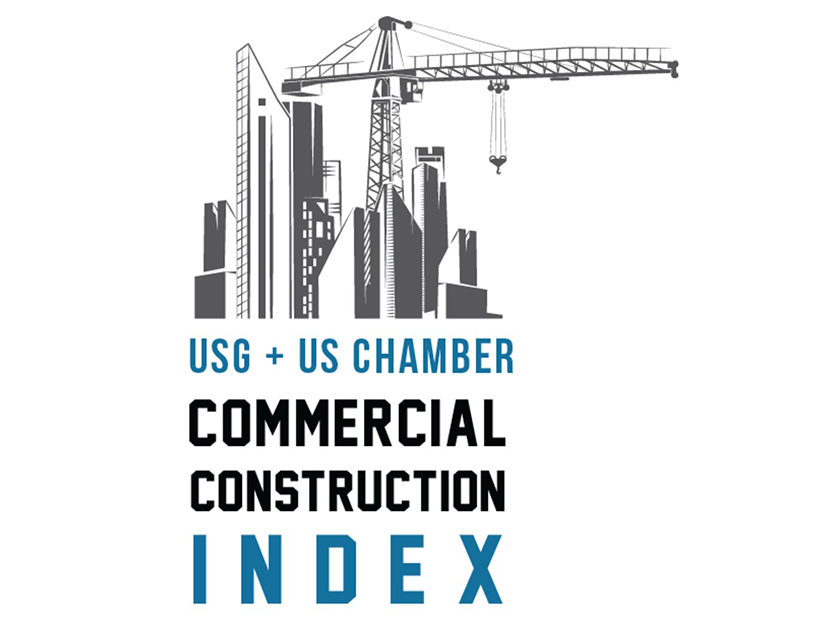Survey: 9 Out of 10 Contractors Report Skilled Labor Shortage

Findings from the Q2 2018 USG Corp. + U.S. Chamber of Commerce Commercial Construction Index show four straight quarters with more than 90 percent of contractors concerned over labor shortages. Concerns increased quarter-over-quarter, with 47 percent of respondents expecting problems finding skilled workers to worsen in the next six months.
"Contractors' pipelines for new business are consistently healthy, however, that optimism is challenged by a growing shortage of workers – a trend that's persisted for more than a year," said Jennifer Scanlon, president and chief executive officer of USG Corp. "In order to sustain the strong pipeline of work, it's important that industry leaders think about process and product innovations that can help complete projects on-time and advance the industry."
The percentage of contractors concerned about fluctuations in steel prices jumped significantly this quarter. Two-thirds (63 percent) of contractors identified steel fluctuations as their top material of concern, a sharp increase from the 30 percent of contractors who expressed concerns in Q2 2017 and the largest fluctuation in contractor sentiment to date. Most (86 percent) contractors also feel the recently-imposed tariffs will have at least a moderate impact on their business.
"The commercial construction industry is vital to the growth of the U.S. economy. Steel and aluminum tariffs and continued workforce shortages threaten to slow the industry's growth and job creation," said Thomas J. Donohue, president and CEO of the U.S. Chamber. "We must embrace free enterprise, rather than undermine the competitiveness of American business, as well as invest in a skilled and motivated workforce to ensure our companies and job seekers alike have the platforms to compete on a global scale."
Overall, contractors maintained a strong national economic outlook in Q2, with a steady level of new business confidence and revenue expectations. The Q2 2018 composite score was 73, down one point from Q1 2018, but reflective of a consistent sentiment of health in the sector. The Index looks at the results of three leading indicators to gauge confidence in the commercial construction industry – backlog levels, new business opportunities and revenue forecasts – generating a composite index on a scale of 0 to 100 that serves as an indicator of health for the contractor segment on a quarterly basis.
The Q2 2018 results from the three key drivers were:
- Backlog: Contractors currently hold an average of 9.3 months of backlog. This represents 73 percent of ideal backlog levels and indicates a stable market with room for growth.
- New Business: Contractors have high confidence in the market's ability to provide new business for the next 12 months. Nearly all (96 percent) contractors report high or moderate confidence in the demand for commercial construction.
- Revenues: Over half (52 percent) of contractors expect to see revenue gains in the next year, an increase of 12 percent year-over-year.
Sustainable building appears to be an emerging area of opportunity, with nearly half (45 percent) of respondents reporting its ability to give them a competitive business advantage. To meet demands, more than half (56 percent) of contractors report registering or certifying their U.S. projects with the U.S. Green Building Council (USBGC) or Leadership in Energy and Environmental Design (LEED) over the past three years. Four out of five contractors also cite that their customers request energy efficient materials for their U.S. projects, which shows demand for green materials is also strong.
The research was developed with Dodge Data & Analytics (DD&A), the leading provider of insights and data for the construction industry, by surveying commercial and institutional contractors.
About the Index
The USG Corporation + U.S. Chamber of Commerce Commercial Construction Index is a quarterly economic index designed to gauge the outlook for, and resulting confidence in, the commercial construction industry. USG Corporation and the U.S. Chamber produce this Index, along with Dodge Data & Analytics (DD&A). Each quarter, researchers from DD&A source responses from their Contractor Panel of more than 2,700 commercial construction decision-makers in order to better understand their levels of confidence in the industry and other key trends. This panel allows DD&A to provide findings that are representative of the entire U.S. construction industry by geography, size, and type of company.
Click here to see the full report, methodology, and graphics.




